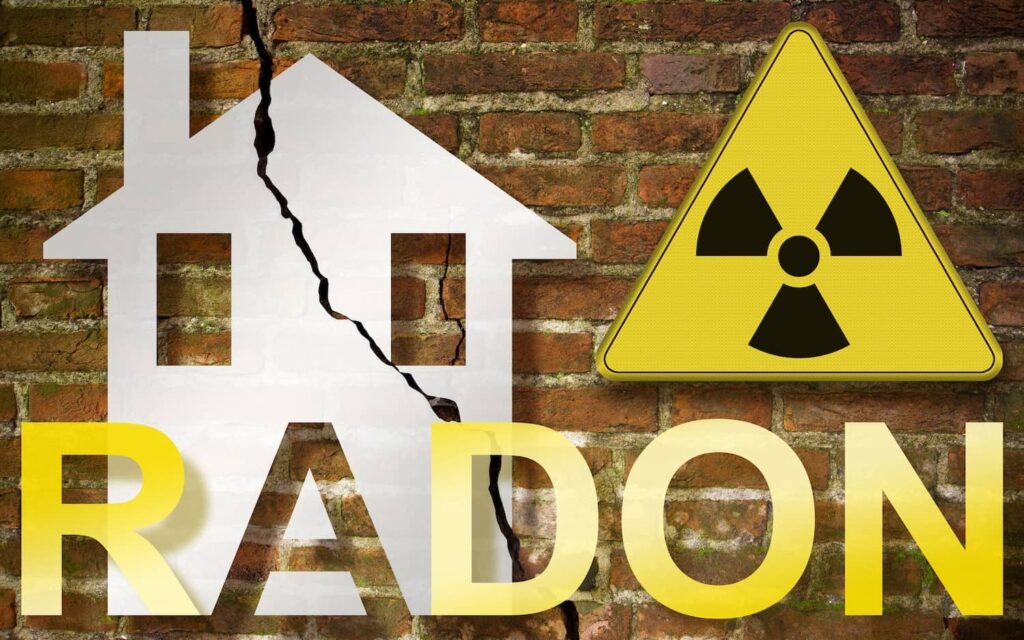How Does Radon Enter a Home?
Radon, a colorless and odorless radioactive gas, lurks unseen yet poses serious health risks such as lung cancer when trapped indoors. Originating from natural uranium decay, it can stealthily infiltrate our homes and expose occupants to its harmful presence. So, how does radon enter a home or building? This article will explore the measures homeowners, buyers, and sellers can take to mitigate its presence. Let\’s dive in!
Soil Penetration
One of the most common ways radon enters a building is through soil penetration. Uranium, found in varying concentrations in soil and rocks, undergoes radioactive decay and produces radon gas as a byproduct. This gas seeps out of the ground and can infiltrate basements or crawl spaces through cracks, gaps, and openings in the foundation. From there, it can travel upwards and permeate the living areas of a home.
To prevent radon entry through soil penetration, basements and crawlspaces should always be properly sealed. Regularly sealing any visible cracks or openings in the foundation significantly reduces the potential for radon, acting as a barrier against this invisible intruder.
Water Supply
Another pathway through which radon can enter a home is via the water supply. Groundwater sources, such as wells, may contain dissolved radon gas. When the water is used for household activities like bathing, cooking, or laundry, the radon gas can be released into the air, leading to indoor exposure.
To address radon in water, homeowners can consider installing a water treatment system specifically designed to remove radon. Activated carbon filters or aeration systems can effectively reduce radon levels in water and minimize its release into the indoor environment. However, the effectiveness of these systems may vary, so consulting a professional for the best solution is advisable.
Construction Materials
Radon can also enter a home through construction materials used during the building process. Certain types of rocks, such as granite and shale, contain higher concentrations of uranium, which can result in increased radon emissions. When these materials are used for foundations, walls, or countertops, radon gas can slowly seep out and accumulate indoors.
To mitigate radon infiltration via construction materials, it is important to ensure proper ventilation in areas where these materials are present. Good airflow and ventilation systems can help dissipate and reduce radon levels, minimizing the potential health risks associated with its presence.
Other Recommended Maintenance
To further fortify a home against radon, regular maintenance of its structural integrity is imperative. Inspect the sealant around windows, doors, and any other openings in the exterior shell of your home. The same goes for the interior, paying special attention to the basement and ground-level flooring. Maintaining a well-ventilated home is crucial for diluting radon concentrations and ensuring a fresh air supply. Routine checks on your home’s ventilation systems, including fans and vents can promote better air circulation and contribute to lowering radon levels.
When to Call a Professional
Homeowners, real estate professionals, or property managers can take some steps to reduce radon levels. However, certain situations require professional intervention. Consult a radon mitigation professional if high radon levels persist despite efforts. They possess the equipment and expertise to lower radon concentrations safely and suggest efficient action plans.
Moreover, if you are buying or selling a home, radon inspection and mitigation can provide a clear idea of what needs to be done to ensure safety in the home. Professionals can also advise on long-term radon reduction solutions like soil suction systems.
Comparing Common Radon Mitigation Systems
Radon mitigation systems are pivotal in reducing and maintaining radon levels within homes. Common systems include:
Soil Suction Radon Reduction Systems: Draw radon from below the house, venting it outside. Installation cost ranges from $800 to $2,500.
House/Room Pressurization: Deters radon entry by increasing pressure in lower home levels. Installation costs typically between $500 and $1,500.
Heat Recovery Ventilators (HRVs): Introduce fresh air while exhausting stale air, which can include radon, usually costing between $1,200 and $2,500 to install.
Each system operates differently, suiting varying home specifics and radon levels. Consulting radon mitigation professionals for the most effective system and installation cost estimates is advisable.
Conclusion
Understanding how radon enters homes empowers homeowners, buyers, and sellers to create safer indoor spaces. Regular maintenance, sealing structural breaches, and employing radon mitigation systems are key to reducing radon intrusion. If you suspect radon indoors, reach out to Champia Real Estate Inspections right away for professional testing to ensure safety and peace of mind for all parties involved.
